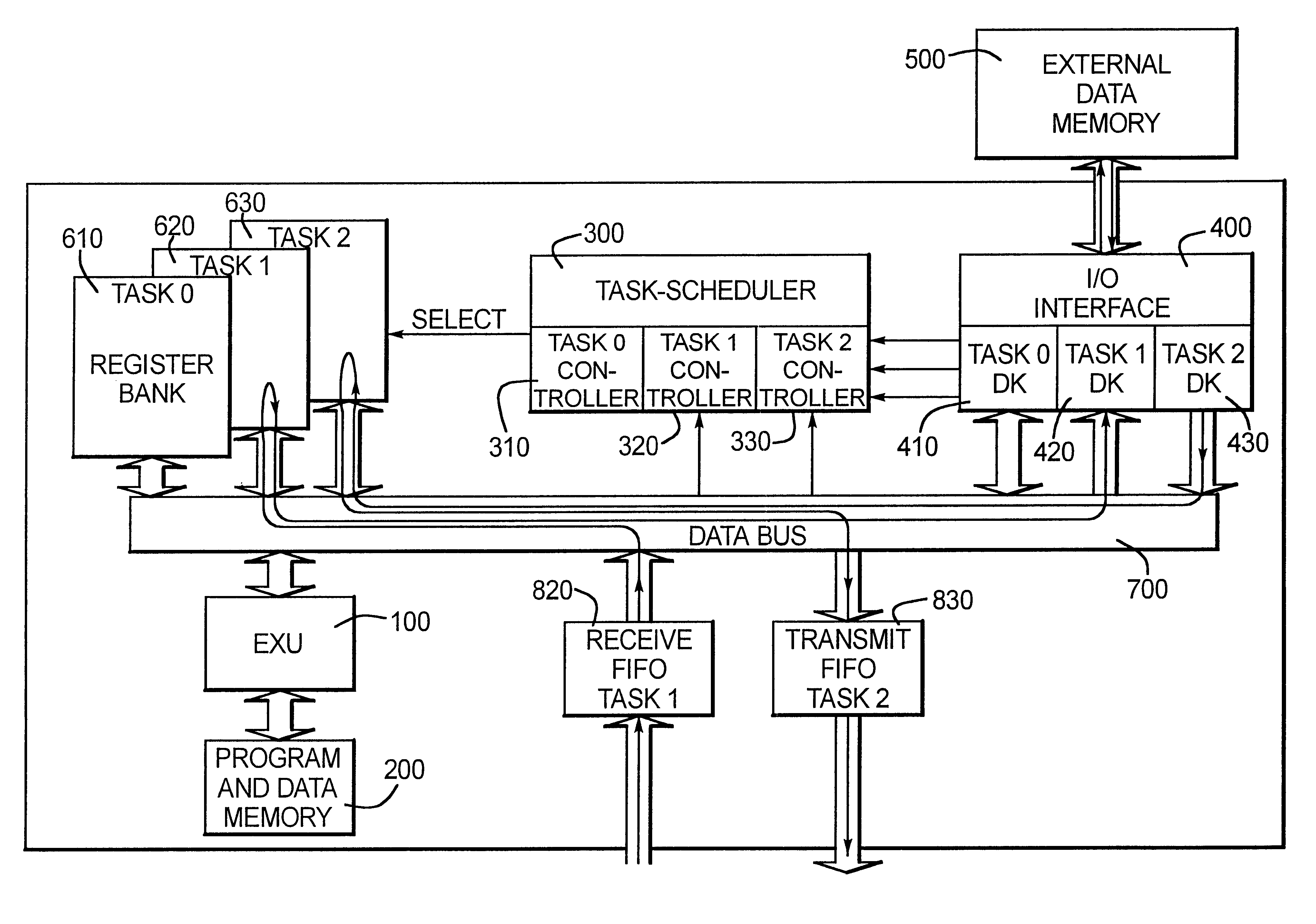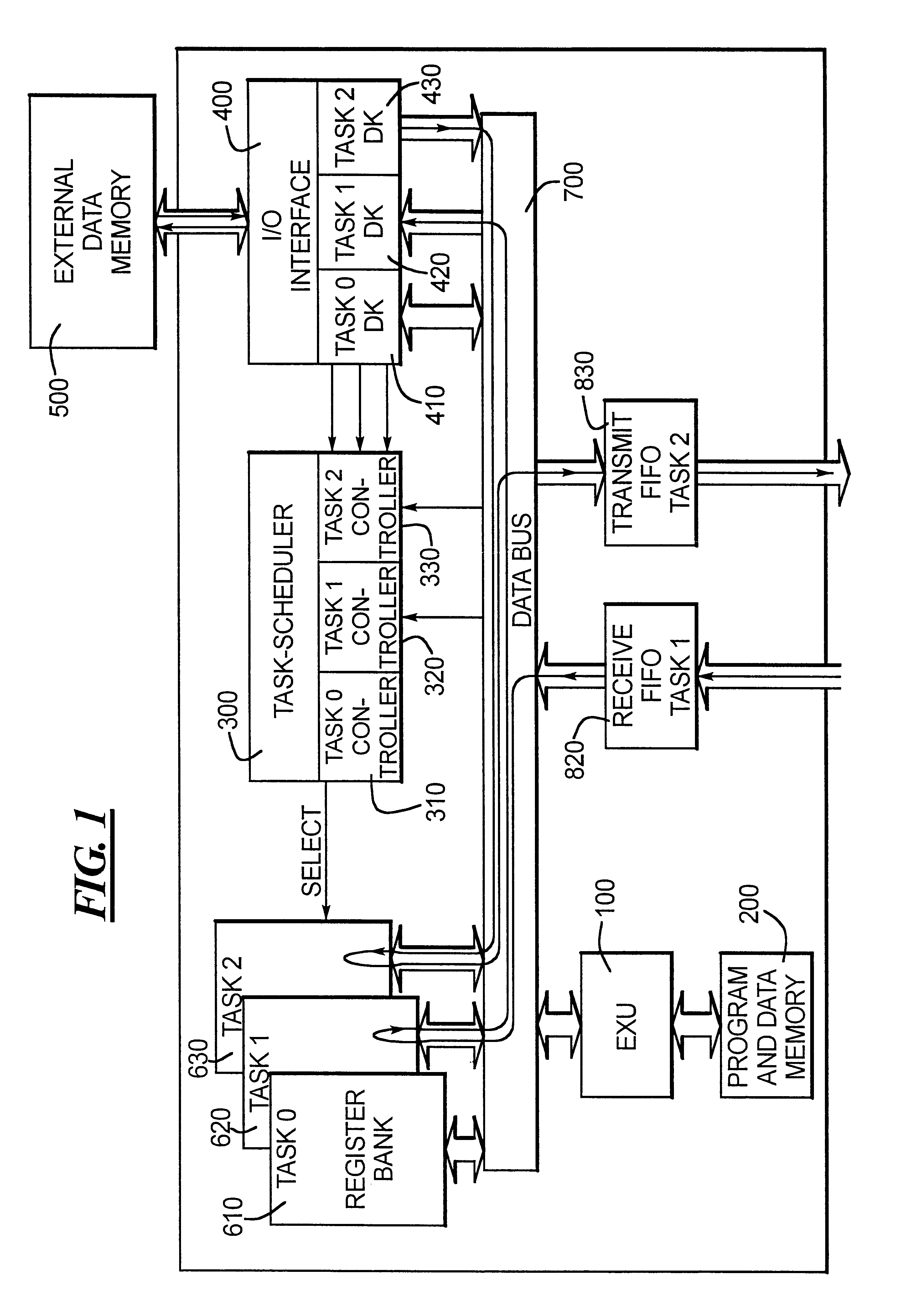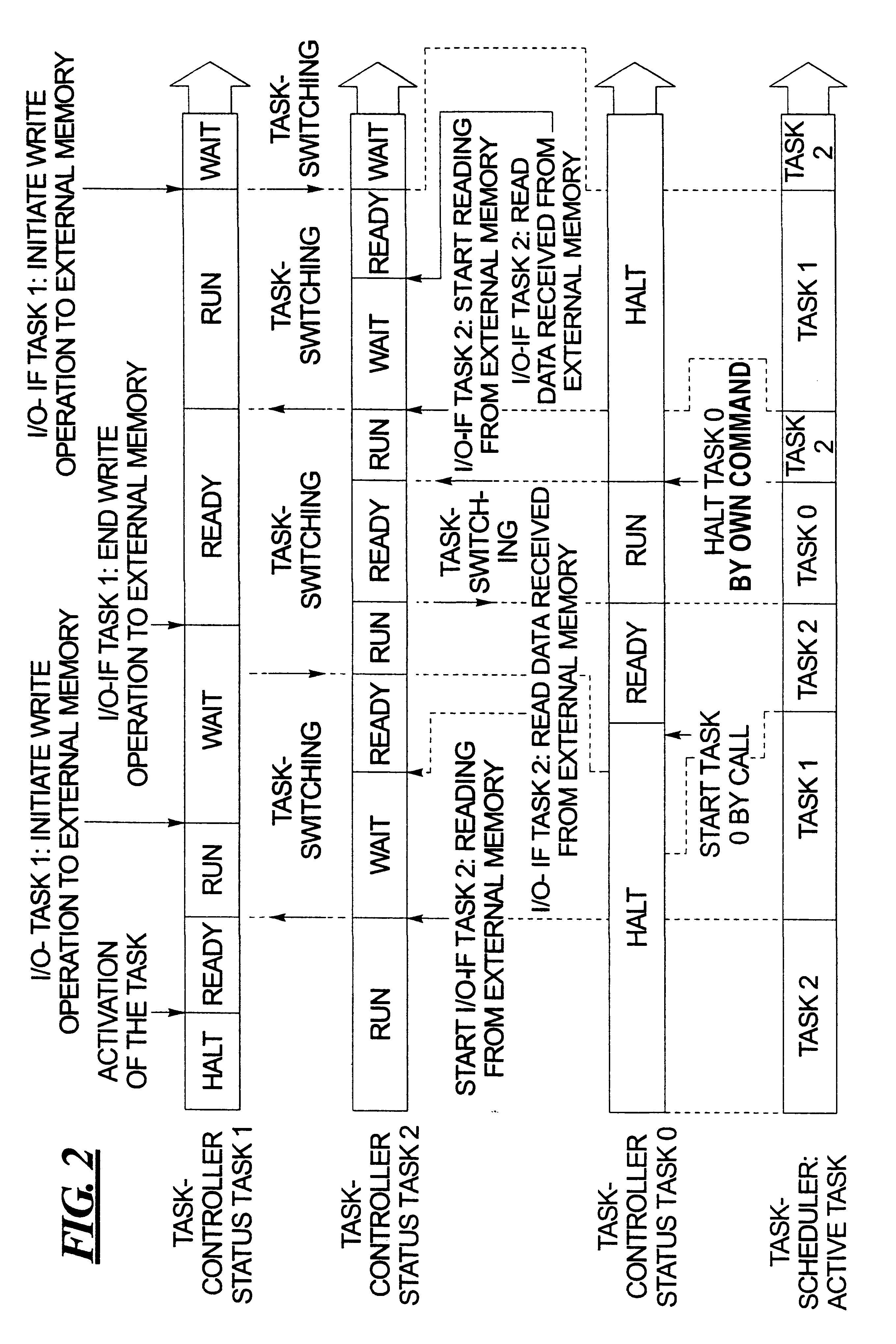Application-specific integrated circuit for processing defined sequences of assembler instructions
- Summary
- Abstract
- Description
- Claims
- Application Information
AI Technical Summary
Benefits of technology
Problems solved by technology
Method used
Image
Examples
Embodiment Construction
Before the circuit according to FIG. 1 and the hardware-controlled changeover of individual TASKs according to FIG. 2 are described, a few explanatory comments are first made with respect to the TASK concept.
As mentioned above, a TASK is a software module consisting of a defined sequence of assembler instructions of the processor used. TASKs are usually defined by program developers as modules of a program code to be created. In many applications, a distinction of three TASKs is sufficient. Specifically, a receive TASK, a transmit TASK, and a supervisor TASK are distinguished. As a component of the program code, the supervisor TASK serves only for initializing, for executing debug operations, and for error processing. A description of the receive and transmit TASKs is given later in the framework of the description of the functioning of the circuit according to FIG. 1.
The various TASKs usually function independent of one another, though in essence certain mutual interactions are pos...
PUM
 Login to View More
Login to View More Abstract
Description
Claims
Application Information
 Login to View More
Login to View More - R&D
- Intellectual Property
- Life Sciences
- Materials
- Tech Scout
- Unparalleled Data Quality
- Higher Quality Content
- 60% Fewer Hallucinations
Browse by: Latest US Patents, China's latest patents, Technical Efficacy Thesaurus, Application Domain, Technology Topic, Popular Technical Reports.
© 2025 PatSnap. All rights reserved.Legal|Privacy policy|Modern Slavery Act Transparency Statement|Sitemap|About US| Contact US: help@patsnap.com



